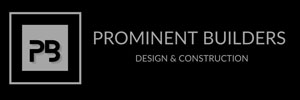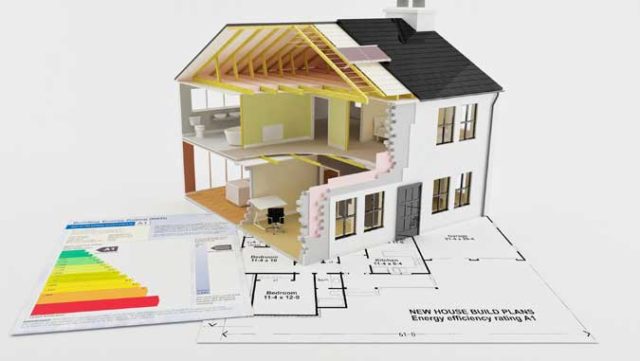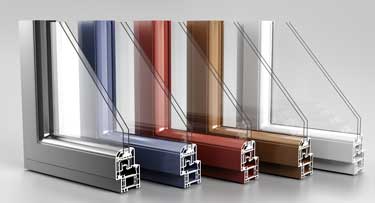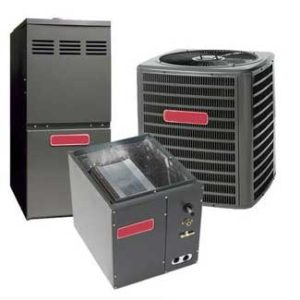Technology focused on energy efficiency in residential construction projects has progressed greatly over the years. By utilizing some of the latest in residential “green” building trends, you dramatically lower your utility costs while being kinder to our environment. Even better, you will create a living space that is more comfortable and has improved indoor air quality. This blog post will focus on some of the energy efficient design trends to consider for your new home construction project.
As mentioned in the previous paragraph, using “green” building products holds a number of benefits. Probably the greatest benefit is seen in the area of energy efficiency. Using the latest products in insulation, HVAC systems, windows, appliances and lighting you will notice a substantial amount of cost savings over the long run. But it’s not just about energy efficiency. Green building products also lead to improved resource conversation, better indoor air quality, along with water conversation.
Here are some of the more common ways to incorporate energy efficiency into your new home:
Low-Emissivity (Low-E) and Argon Gas Windows. These energy-efficient window types are designed to neutralize the effects of weather changes on your home’s interior. Because of the ways they are constructed, they keep the temperature inside your home at a more constant level so your cooling and heating systems don’t have to work as hard. They can be either double- or triple-paned and provide additional protection against air leakage. They also block ultraviolet rays which means your home’s interior will be protected from sun damage. While they may be a larger initial investment, over the course of their lifetime, you will notice cost savings in terms of your energy bills.
- Upgraded Insulation. The maximum thermal performance (or R-value) of insulation is highly dependent upon proper usage and installation. Blanket insulation is made of fiberglass, mineral wool, plastic fibers or natural fibers. This is the type of insulation you will typically see fitted between studs, joists and beams. Other types of insulation include concrete block insulation, foam board (rigid foam), insulating concrete forms (ICFs), loose-fill and blow-in, reflective system, rigid fibrous or fiber insulation, sprayed foam and foamed-in-place, and structural insulated panels. Our professionals can talk to you about the ways in which insulation can be applied to your new home to provide greater energy efficiency.
Energy Star® Rated Appliances. Every appliance comes with two “price” tags – the cost you will pay for the appliance and the cost of operating the appliance. For products that have an Energy Star® certification, you will save money on their operation through reduced energy usage. Dishwashers, clothes washers and dryers, freezers, refrigerators, dehumidifiers, air purifiers, lightings and fans, electronics, heating and cooling systems, etc., can provide a tremendous amount of value through energy savings and resource conservation.
- Low-Flow Water Fixtures. You don’t need to be building a new home to utilize low-flow water fixtures. Replacing older showerheads, toilets, and faucets with low-flow fixtures can have a beneficial impact on water conservation. A low-flow toilet alone can save more than 20,000 gallons of water per year for a four-member family.
- Solar Panels. Did you know that New Jersey has some of the best solar incentives in the country? The success of NJ’s solar electricity program is because of its compensation and rewards. New Jersey’s net metering policy allows you to sell excess electricity back to the grid at the retail rate. You can also take advantage of New Jersey’s Solar Renewable Energy Certificates, a solar sales tax exemption, property tax exemption and a Federal solar tax credit. We can talk to you about all the benefits you will receive.
High-Efficiency HVAC System. The biggest energy hog in your home is the HVAC system. By installing a high-efficiency heating, ventilation and cooling system, you can realize a good amount of savings in your utility bills. An efficient HVAC system will also provide more comfort because of the way in which it maintains a constant temperature in every room, provides a consistent flow of air, and controls humidity.
- Tankless Water Heaters. There are pros and cons to installing a tankless water heater. They are becoming more popular in recent years mainly because of their compact size and efficiency. Some of the pros of a tankless water heater include the fact that they provide almost instantaneous hot water. They are cost- and energy-efficient and have a fairly long lifespan. Yes, they are more expensive than a conventional water heater but they can also save you 30-40% on water use.
If you know you want to commit to being more energy-efficient in your home, whether renovating or building new, the professionals at Prominent Builders and Design can assist you every step of the way.




